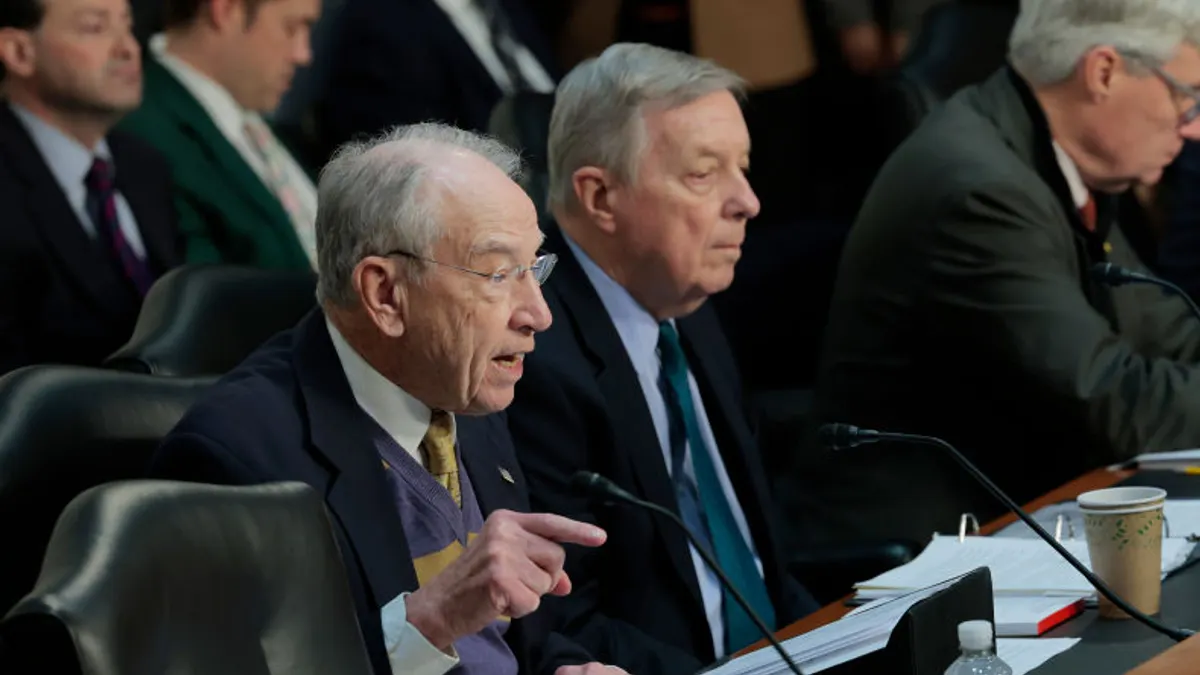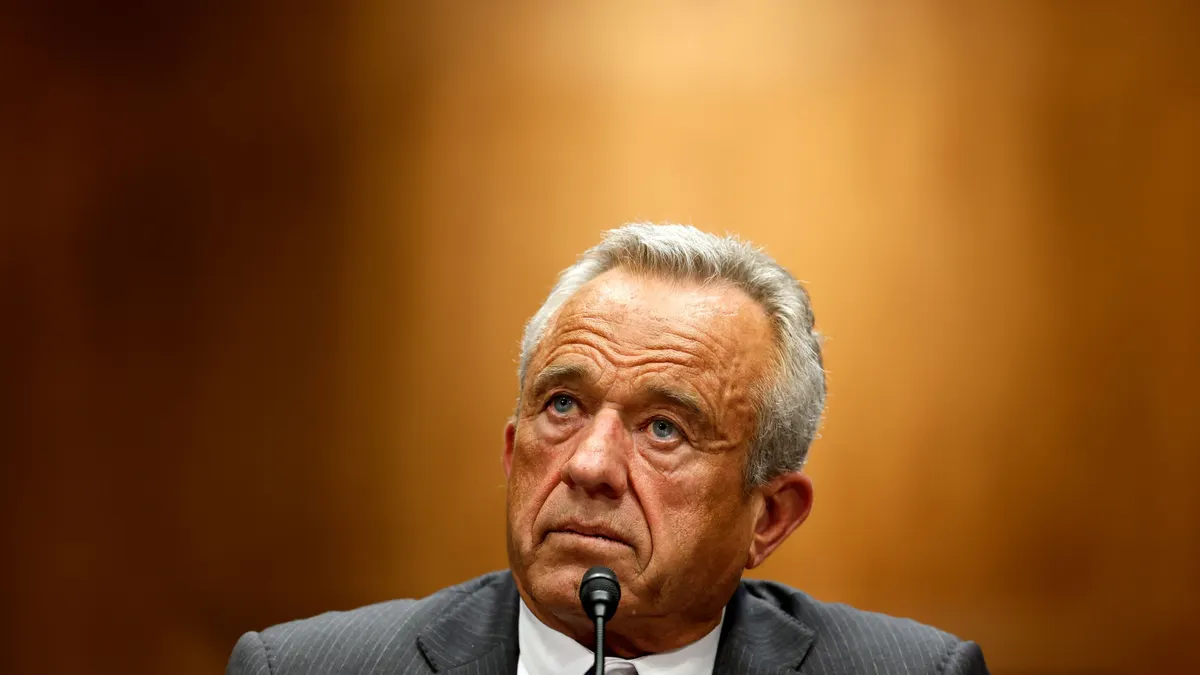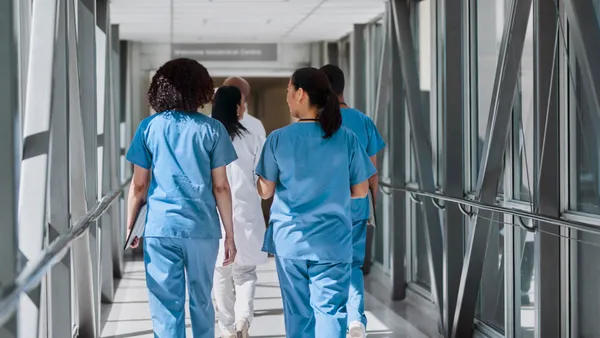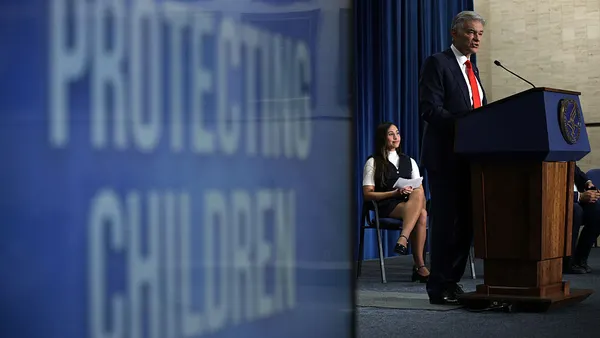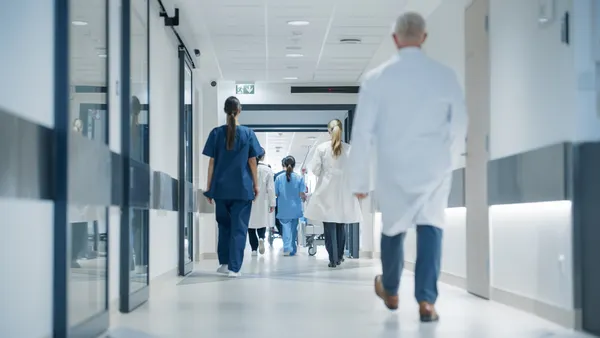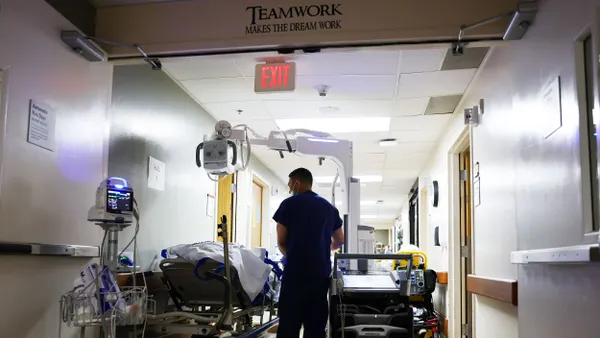Dive Brief:
- Universal Health Services raised its financial forecast for 2025 on Monday, after the operator posted third quarter revenues that increased 13.4% year over year to $4.5 billion.
- The for-profit operator attributed the revenue increase in part to a $90 million boost from Washington D.C.’s recently approved Medicaid supplemental payment program, as well growth in its acute care volumes.
- The health system now expects to take between $17.3 billion and $17.4 billion in revenue for the year, up from its previous forecast of $17.1 billion to $17.3 billion.
Dive Insight:
UHS recorded a net income of $373 million for the third quarter, a more than 44% increase from the same period last year.
Growth in UHS’ acute care division once again outpaced its behavioral health portfolio in the third quarter — a pattern that’s been playing out in UHS’ earnings all year. Same-facility adjusted admissions increased 2% year over year in UHS’ acute services, while same-facility adjusted admissions rose 0.5% in behavioral services.
In its acute care division, UHS recorded another $25 million loss during the quarter on its new Cedar Hill Regional Medical Center in Washington, D.C. The facility’s slow ramp-up timeline has been a drag on UHS’ finances, but President and CEO Marc Miller said on a Tuesday morning call with investors that the facility received anticipated Medicare certification in September. The certification followed a survey from the Joint Commission to ensure the hospital met national quality and safety standards, and now Cedar Hill can receive government funds. UHS expects to “break even or better” on the facility by year-end.
UHS plans to open its next acute hospital, Alan B. Miller Medical Center, in Palm Beach Gardens, Florida, this spring, according to Miller. The health system currently operates 29 inpatient acute hospitals.
Meanwhile, UHS has been working for multiple quarters to address lagging growth in its behavioral health business. UHS executives wanted the health system to grow adjusted patient days by 2% to 3% in 2025. That figure looked out of reach last quarter, and on Tuesday CFO Steve Filton confirmed it was now a “reasonable target for next year.”
Executives say part of the problem is that UHS’ behavioral health portfolio is misaligned to meet demand for outpatient care. UHS’ portfolio skews heavily inpatient — it has 345 inpatient facilities and 100 outpatient access points.
Most of UHS’ outpatient facilities feature “step-down” services for patients exiting UHS’ inpatient behavioral services, according to Miller. The operator hasn’t “really had much of a presence historically” in offering step-in outpatient services — where patients enter behavioral healthcare for the first time through outpatient care, Filton said.
Step-in patients “often are not comfortable ... entering the system on a hospital campus, they much prefer to get that care in a freestanding outpatient setting,” Filton said. To capture their business, UHS is opening 10 clinics that will have no inpatient hospital branding this year, according to Miller.
Still, other problems dog the behavioral care division, including troubles recruiting and retaining talent.
“To get [to 2% to 3% targets], we need to continue to be able to fill our vacancies and reduce our turnover,” said Filton. The health system said it has been making progress on solving its labor troubles, but “that process has been somewhat slower than we expected,” the CFO said.
UHS executives also addressed headwinds from Washigton during Tuesday’s call, particularly upcoming changes to Medicaid state supplemental payment programs.
The programs, which are designed to help providers cover the shortfall between Medicaid reimbursement rates and actual care costs, have historically offered dependable revenue boosts for hospital operators. During the third quarter, that lift came from the approval of Washington, D.C.’s state-directed program. Across 2025, UHS expects to net $1.3 billion from state supplemental payment programs.
However, caps to the payments included in the One Big Beautiful Bill Act will cause UHS to take in between $420 million to $470 million less in state-directed payments by 2032.
More immediately, UHS says it could face pressure in its Texas and Florida markets and lose between $50 million to $100 million annually if Congress does not act to extend enhanced COVID-era Affordable Care Act subsidies. Millions are expected to become uninsured if the subsidies expire and providers are projected to lose billions in revenue.
The fate of the subsidies is at the center of a funding battle between Democrats and Republicans that caused the government to shut down earlier this month.




